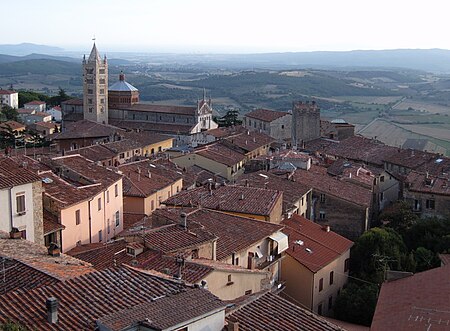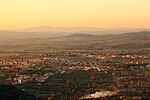Massa Marittima
Castles in ItalyCities and towns in TuscanyMassa MarittimaMunicipalities of the Province of Grosseto

Massa Marittima (Latin: Massa Veternensis) is a town and comune of the province of Grosseto, southern Tuscany, Italy, 49 km NNW of Grosseto. There are mineral springs, mines of iron, mercury, lignite and copper, with foundries, ironworks and olive-oil mills. In Follonica, on the coast, there are furnaces where the iron ore of Elba is smelted.
Excerpt from the Wikipedia article Massa Marittima (License: CC BY-SA 3.0, Authors, Images).Massa Marittima
Via Renato Fucini,
Geographical coordinates (GPS) Address Nearby Places Show on map
Geographical coordinates (GPS)
| Latitude | Longitude |
|---|---|
| N 43.05 ° | E 10.893611111111 ° |
Address
Via Renato Fucini
Via Renato Fucini
58024
Tuscany, Italy
Open on Google Maps









